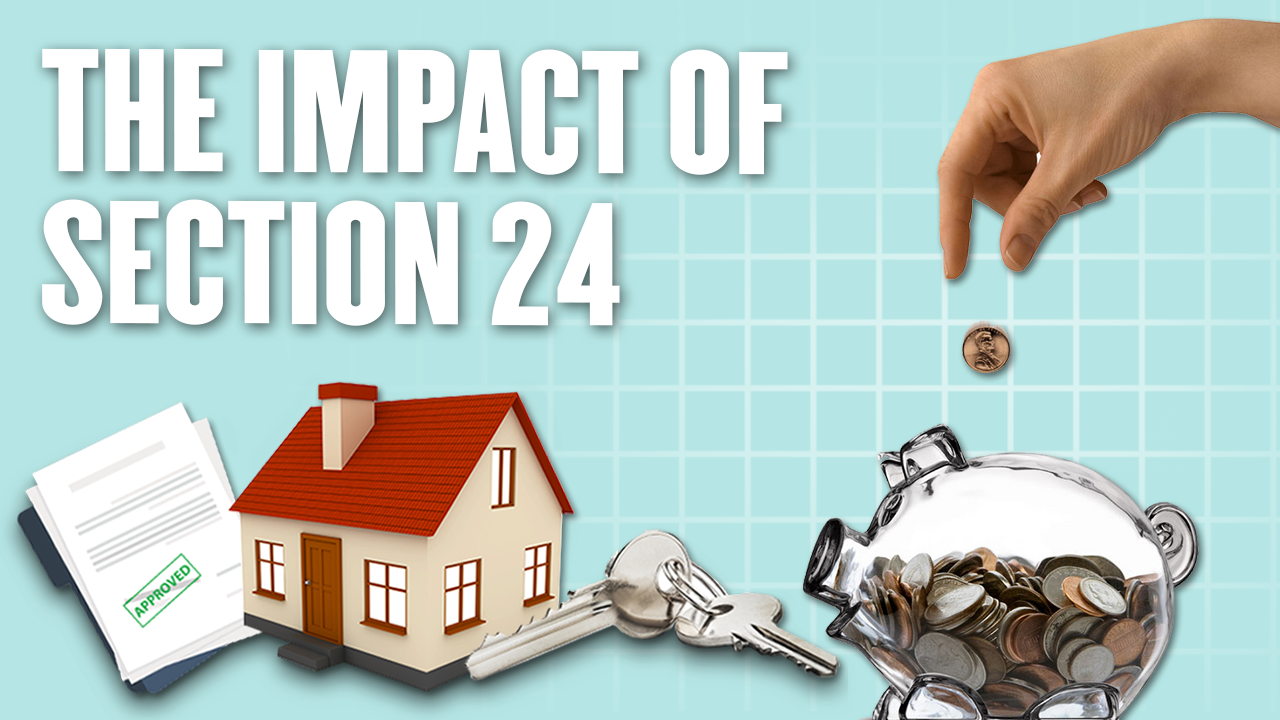April 2020 marked the start of the final year of the phased implementation of Section 24, ending landlords’ ability to claim finance costs as tax-deductible. Self-employed landlords under the UK’s tax payment system are yet to fully experience the financial impact.
As of the latest update, 75% of the impending increases have been paid, with a final increase expected in January 2022, indicating that the full impact is still looming. Landlords who choose to maintain their current status need to assess the effect on their tax payments on account and plan for the future.
For those still contemplating options, it’s crucial to understand that even though tax payments may not be due immediately, the accumulating bill is growing rapidly. Without proactive planning, landlords could face significant cash flow challenges in 2022, especially when tax bills may exceed manageable levels for moderately geared landlords. This situation may necessitate temporary borrowing or dipping into savings.
Why does Section 24 exist?
The Government Stated:
- Buy-To-Let (BTL) investors received disproportionate financial support compared to owner-occupiers for mortgages.
- The new regulations aimed to increase the housing supply for residential buyers, especially first-time buyers.
- Revising mortgage tax relief on BTL mortgages was intended to curb speculation in the housing market.
- The Bank of England expressed concern that a potential decline in house prices could be worsened if landlords sold properties to exit or consolidate their positions.
- The Government aims to enhance professionalism in the industry.
What can landlords do about section 24?

Landlords have been getting in contact and asking what they should be doing. Tax Policy Associates doesn’t, and can’t, provide tax advice – but it’s a fair question. Here’s a quick summary of how we see things:
Section 24 of the Finance (No. 2) Act 2015 amended the UK tax code to restrict landlords’ ability to deduct their mortgage interest costs from their taxable rental income.
1. Incorporate
Engage a qualified tax adviser, incorporate a company, and transfer your property business to that entity. This allows full deduction of mortgage interest against the company’s corporation tax. However, key considerations include:
- New Mortgage Terms: Your current lender is unlikely to transfer the existing mortgage to the new company. Obtaining a new mortgage may entail higher costs (interest and fees). Assess whether these costs outweigh the tax benefit.
- Stamp Duty: Transferring to a company may incur stamp duty up to 15%, with an additional 2% for non-residents. Retrospective partnership claims for married couples might not effectively escape stamp duty, as recent legal cases highlight.
- Capital Gains Tax (CGT): Property transfer to the company may trigger CGT. While CGT incorporation relief is possible, proving a “business” to HMRC can be challenging. Complex structures may jeopardize incorporation relief, resulting in higher overall taxes.
- Double Taxation: The company incurs tax on profits with a deduction for interest costs. When the company distributes profits to you (dividends, wages, or capital gains), a second level of tax applies. Thorough calculations are essential to account for this double taxation scenario.
2. Don’t Incorporate
Maintain your current approach, accepting the expense of non-deductible interest under Section 24.
Alternatively, consider reducing leverage to avoid incurring an after-tax loss, recognizing that this requires deploying additional capital.
3. Sell-Up
It’s possible that neither of the initial two options is viable, as Section 24 renders your rental business financially impractical, consistent with Osborne’s intent.
In such a scenario, selling up might be necessary. It’s not an acknowledgment of failure but a recognition that investors must adjust to changing circumstances.
What is the fourth choice?
There isn’t a one-size-fits-all solution.
Trusts, LLPs, offshore arrangements – not only are they likely to fail when challenged, but the consequences could be far worse than doing nothing at all. Potential six-figure sums in SDLT plus CGT, coupled with intricate structures, can lead to complex and expensive additional tax implications.
Whether you’re a multinational executing a £10bn M&A transaction or a landlord contemplating incorporating a one-property business, the crucial tax question remains constant: “How much do I gain if this succeeds, and how much do I stand to lose if it goes awry?”
How can Less Tax 4 Landlords help landlords with a Section 24 problem?
- No need for remortgage or title change, eliminating CGT or Stamp Duty.
- A lender-friendly business structure tailored to your needs.
- Seamless succession planning, offering protection in case of marital break-up.
Depending on your business needs, benefit from:
- Full relief for finance and mortgage costs under Section 24 Tax Changes.
- Reduced Capital Gains Tax on Portfolio Reinvestment.
- Inheritance Tax mitigation within two years of trading.
- A maximum Tax Rate of 20% on your property income.
How might Section 24 be hurting your Property Business?
Section 24 can have various adverse impacts on your property business:
- Inflated Profits: Your profits are artificially increased.
- Higher Tax Bracket: You may find yourself in a higher-rate tax bracket.
- Larger Tax Bill: Expect a substantially larger tax bill.
- Uncertainty: Increasing tax bills create business planning uncertainty.
- Cash Flow Impact: It affects your cash flow negatively.
- Stalled Portfolio Growth: Plans to expand your property portfolio are on hold.
- Property Sales: Selling properties to cover tax bills becomes a necessity.
- CGT Concerns: Selling one property triggers CGT bills on others.
- Retirement Risks: Your retirement plans face potential challenges.
- DIY Approach: Spending more time on tasks to cut costs becomes a necessity.
The impact of Section 24

For landlords reporting rental profits in personal names, April 2020 marks the culmination of the 4-year transition period initiated by the government to ease the impact of Section 24. This phased implementation implies that the payments made on account from 2018 to 2021 are likely lower than the actual tax bill when filing tax returns.
This phenomenon, termed the ‘tax escalator effect,’ is visually depicted in the bar chart above. The table below specifies when the balancing payments for each stage of the implementation period become due.
| Tax Year | Deductible % of finance costs | Basic Tax Credit | Balancing Payment Due |
| 2017 to 2018 | 75% | 25% | January 2019 |
| 2018 to 2019 | 50% | 50% | January 2020 |
| 2019 to 2020 | 25% | 75% | January 2021 |
| 2020 to 2021 | 0% | 100% | January 2022 |
As evident from the information above, January 2019 marked the initial balancing payment for a tax year impacted by Section 24 – the 25% deduction. Landlords might assume that the rise witnessed in 2019 constitutes 25% of the total increase by January 2022.
However, the reality is different; the 2019 increase for many landlords will be significantly less than 25% of the overall increase by 2022. This is because Section 24 often leads landlords into higher tax brackets and results in the loss of personal allowances over time, thereby subjecting them to higher tax rates.
When Section 24 Multiplies Your Taxable Profit by 400%
Let’s examine John’s portfolio with £250,000 gross rental income, £50,000 allowable expenses, and £150,000 finance costs. Due to Section 24, John’s taxable income has surged from £50,000 to £200,000, resulting in a tax bill calculation:
- £12,500 @ 0% = £0
- £37,500 @ 20% = £7,500 (tax bill on £50,000 without Section 24)
- £50,000 @ 40% = £20,000 (now a higher-rate taxpayer)
- £25,000 @ 60% = £15,000 (lost all personal allowance)
- £25,000 @ 40% = £10,000
- £50,000 @ 45% = £22,500 (now an advanced-rate taxpayer)
Total Tax on £200,000 = £75,000
Minus Tax Credit £150,000 @ 20% = (£30,000)
Net Tax to Pay = £45,000
MORE Property blogs HERE:
Buy To Let Defaults Surge with Rising Rates
Cashing Out of Buy To Let? Top Places to Make a Quick Sale
Why Are Buy-to-Let Mortgages Interest Only?
Is Buy-to-Let Still Profitable Today?
A Comprehensive Guide to Buy-to-Let Mortgages
First-Time Buyer’s Guide to Buy-to-Let Mortgages
Should You Invest in Property Now or Wait for 2024?
How Much Do You Need for Buy-to-Let Mortgages?
Stamp Duty on Buy-to-Let Properties
Can I Use Equity As A Deposit For Buy To Let?
Can I Buy A House And Renting It Out UK?
Is renting houses profitable UK in 2023?
Is It Illegal To Live In Your Buy To Let Property?
Ways to Minimize Your Rental Property Taxes
Section 24’s Impact on Property Investor Cashflow


